Active
The latest Active breaking news, comment, reviews and features from the experts at T3
Explore Active
-

Build stronger, healthier knees to run pain-free with this 4-move dumbbell workout
Run more comfortably and confidently
By Bryony Firth-Bernard Published
-
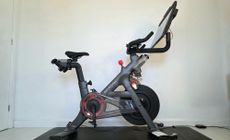
Peloton Cross Training Bike+ review: the best exercise bike for those who can afford it
Home fitness doesn’t get any better than this, but is it a worthy upgrade for existing Peloton users?
By Lee Bell Published
-

Smart rings have just got edgier thanks to Diesel and Ultrahuman’s unexpected team-up
Ultrahuman and Diesel's collaboration lands with surprising intent
By Matt Kollat Published
-
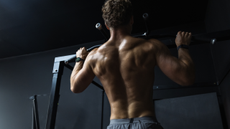
4 exercises a sports scientist swears by to build a bigger back
And you can do them all at home
By Bryony Firth-Bernard Published
-
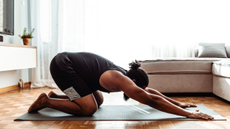
A top trainer shares a 6-minute workout to help boost full-body mobility and strengthen your joints
Start your day off, or your workout, with these six exercises to improve your movement and mood
By Bryony Firth-Bernard Published
-

Pebble's Index 01 is the anti-smart ring that only does one job and people will love it
A tiny stainless steel ring with a button and microphone might be the most unusual wearable Pebble has ever made
By Matt Kollat Published
-
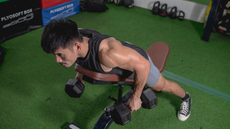
Bat wing rows: the underrated exercise for adding strength to your upper back and rear delts
Improve your posture, pressing and pulling movements with this simple exercise
By Bryony Firth-Bernard Published
-

I’m a camping connoisseur and these are the 3 best tents I’ve seen in 2025
If I could only pick three tents for 2025, these are the ones I'd choose
By Derek Adams Published
-
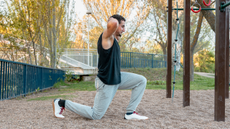
This three-move bodyweight workout builds full-body strength and burns lots of calories
If life's got hectic and you need a quick full-body workout to keep you ticking over, this is it
By Bryony Firth-Bernard Published
-

A top trainer shares a 10-minute ab workout to strengthen your midsection muscles
Kayla Itsines reveals how to strengthen your abdominal muscles when you're short on time
By Bryony Firth-Bernard Published
-

BioLite Dash 450 Headlamp review: Brilliantly balanced, lightweight head torch for outdoor adventures
It might seem simple, but the BioLite Dash 450 headlamp is brilliant
By Pat Kinsella Published
-

Lifesystems Solo Peak Tent review: a 1kg ultralight shelter built for fastpacking and solo adventures
A light-as-you-like one-person shelter for backpacking adventures, wild camping and fastpacking forays
By Pat Kinsella Published
-

The Samsung Galaxy Watch Ultra has been slashed to its lowest-ever price at Amazon – but stock’s flying fast
You can now save over £200 off Samsung’s best rugged smartwatch
By Bryony Firth-Bernard Published
-

Vertu Meta Ring arrives with a twist no other smart ring offers – and it doesn’t need a subscription
The luxury brand's new smart ring combines premium design with always-on wellness support
By Matt Kollat Published
-

Topo Athletic MTN Racer 4 review: My pick for 2025’s best everyday trail-running shoe
It might not be pretty, but the Topo Athletic MTN Racer 4 is my perfect everyday running shoe
By Pat Kinsella Published
-
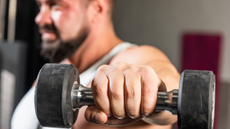
Three exercises to ‘life-proof’ your shoulders, according to a fitness expert
Healthy shoulders lead to better movement and bigger lifts
By Bryony Firth-Bernard Published
-
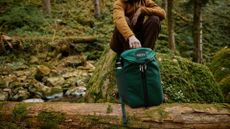
YETI is gearing up for its biggest year yet with a huge 2026 refresh on the way
The coolers-and-cups icon just laid out its most exciting roadmap in years, and it all points to a gear boom
By Matt Kollat Published
-

Amazon is still selling the Garmin Forerunner 165 for a ridiculously low price after Black Friday
You can still grab this beginner-friendly running watch for a fantastic price before Christmas
By Bryony Firth-Bernard Published
-

Whoop-rival fitness wearable is finally worth taking seriously thanks to a major new software update
The December update gives Amazfit's Helio Strap a serious upgrade
By Matt Kollat Published
-
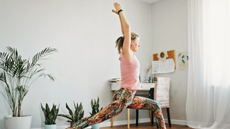
A Pilates expert says these 7 standing exercises build core strength, balance and stability
If you struggle with mat Pilates, this low-impact standing routine will be perfect for you
By Bryony Firth-Bernard Published
-

Two dumbbells, five exercises and 24 minutes to add size and strength to your upper body
Here’s an upper body workout you can easily squeeze in around the festive season
By Bryony Firth-Bernard Published
-

Adidas' latest running shoes promise comfort that doesn’t fade, no matter how long the run feels
Runners say the best bit is the end – Adidas’ new Supernova Rise 3 and Glide flip that idea on its head
By Matt Kollat Published
-

Brooks shakes up its lineup with the surprisingly agile Glycerin Flex
The Glycerin goes off-script
By Matt Kollat Published
-

Chris Hemsworth shares a core exercise he’s been doing – and it’s not what you think
It also strengthens the shoulders and hips too
By Bryony Firth-Bernard Published
-

Columbia rebuilt the Battle of Endor with real outdoor gear and it looks incredible
Columbia returns to the forest moon
By Matt Kollat Published
-

Garmin and Strava finally agree on something – 2026 will be the year fitness changes direction
Two giant fitness datasets paint a clearer picture of where movement, motivation and wearable tech are heading in 2026
By Matt Kollat Published
-
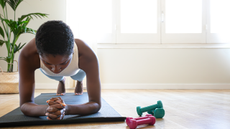
Five minutes and this bodyweight workout is all you need to improve your deep core strength
Do this workout three to four times a week for a more resilient body
By Bryony Firth-Bernard Published
-

Arc’teryx resurrects its most surprising pattern and the new collection is wilder than last year’s sell-out drop
Atomic and Arc’teryx expand the camo collaboration that fans couldn’t get enough of
By Matt Kollat Published
-

The top running shoe on Strava in 2025 isn’t the Pegasus, Clifton or Vaporfly – here’s what actually came first
Strava’s new data reveals a shake-up nobody predicted
By Matt Kollat Published
